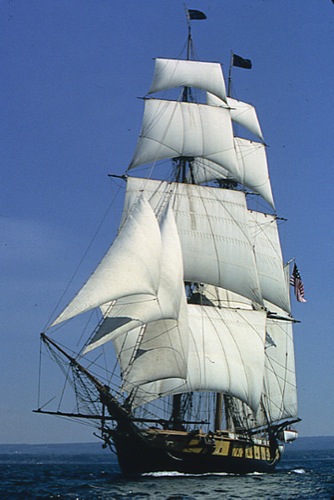
Courtesy Erie CVB
Although the War of 1812 produced iconic images and moments, such as the British burning of Washington, D.C.; the Battle of New Orleans; Old Ironsides; and the Star-Spangled Banner, most Americans today know little about the war, which started in June 1812 and lasted until early 1815.
Even the bicentennial of the war is being overshadowed by the more publicized sesquicentennial of the Civil War. Although several states have bicentennial commissions, legislation to form a national War of 1812 Bicentennial Commission failed to pass Congress.
However, groups can learn more about the War of 1812 at several interesting museums and historic sites.
Erie Maritime Museum
Erie, Pa.
Commodore Oliver Hazard Perry’s victory over a British naval force on Lake Erie on Sept. 10, 1813, was a major step in securing the Northwest for the United States. The Erie Maritime Museum provides an incisive look at the Battle of Lake Erie and its participants.
The museum’s exhibits include artifacts, schematic drawings of the vessels that took part in the battle, a split-screen video about the battle, and the upper portion of a full-size working mast, spars and sails with demonstrations about the operation of square-rigged fighting ships.
The most compelling exhibit is a replica of Perry’s original flagship, the Lawrence, which was severally damaged, causing him to transfer the battle flag to the Niagara. To authenticate the damage, 53 rounds of 24- and 32-pound shot were fired into the replica hull from the same distance as that of the firing by the British squadron.
The museum is also homeport to the Flagship Niagara, a two-mast, square-rigged reproduction of Perry’s relief flagship; the vessel is available to tour when it is in port.
Fort McHenry
Star-Spangled Banner Flag House
Baltimore
When Fort McHenry successfully withstood a fierce British bombardment in 1814, it not only saved Baltimore from possible destruction, it also inspired Francis Scott Key to pen the immortal words that became our national anthem when he saw the American flag still flying “by the dawn’s early light.”
The National Park Service preserves the star-shaped fort, which looks much like it did when it repulsed the British attack, as a national historic site.
“It is the original fort that was here during the War of 1812,” said Vince Vaise, the park’s public information ranger.
During the summer, costumed interpreters present living-history activities such as fife-and-drum concerts, firing cannons and raising the fort’s large flag.
A new visitors center that opened last year has exhibits about the war and Key’s writing of the anthem.
The house of Mary Pickersgill, the seamstress who made the flag that inspired Key, is preserved in downtown Baltimore near the Inner Harbor. A replica of the flag hangs behind a glass cover on the side of an adjacent visitors center.
“This is the actual size,” said a guide. “It was 30 feet by 42 feet. The stars are two feet tall. It had 15 stars and 15 stripes and contains more than 400 yards of fabric.”
The visitors center has a fragment of the original flag, a short film about the making of the flag and an exhibit about the War of 1812.
The original battle-scarred flag is displayed in a special room at the Smithsonian Institute’s National Museum of American History in Washington.
— www.nps.gov/fomc/ —
— www.flaghouse.org —











